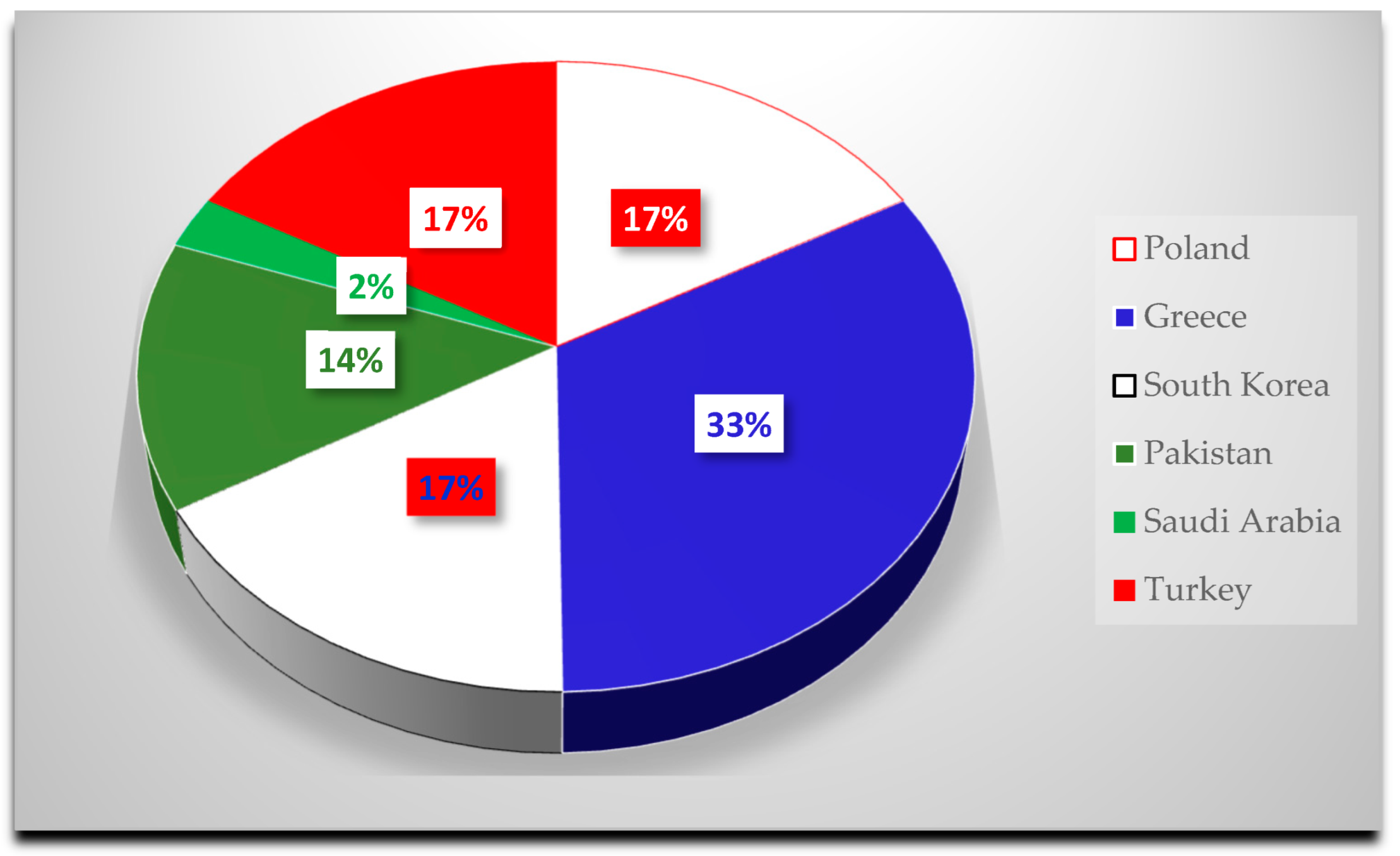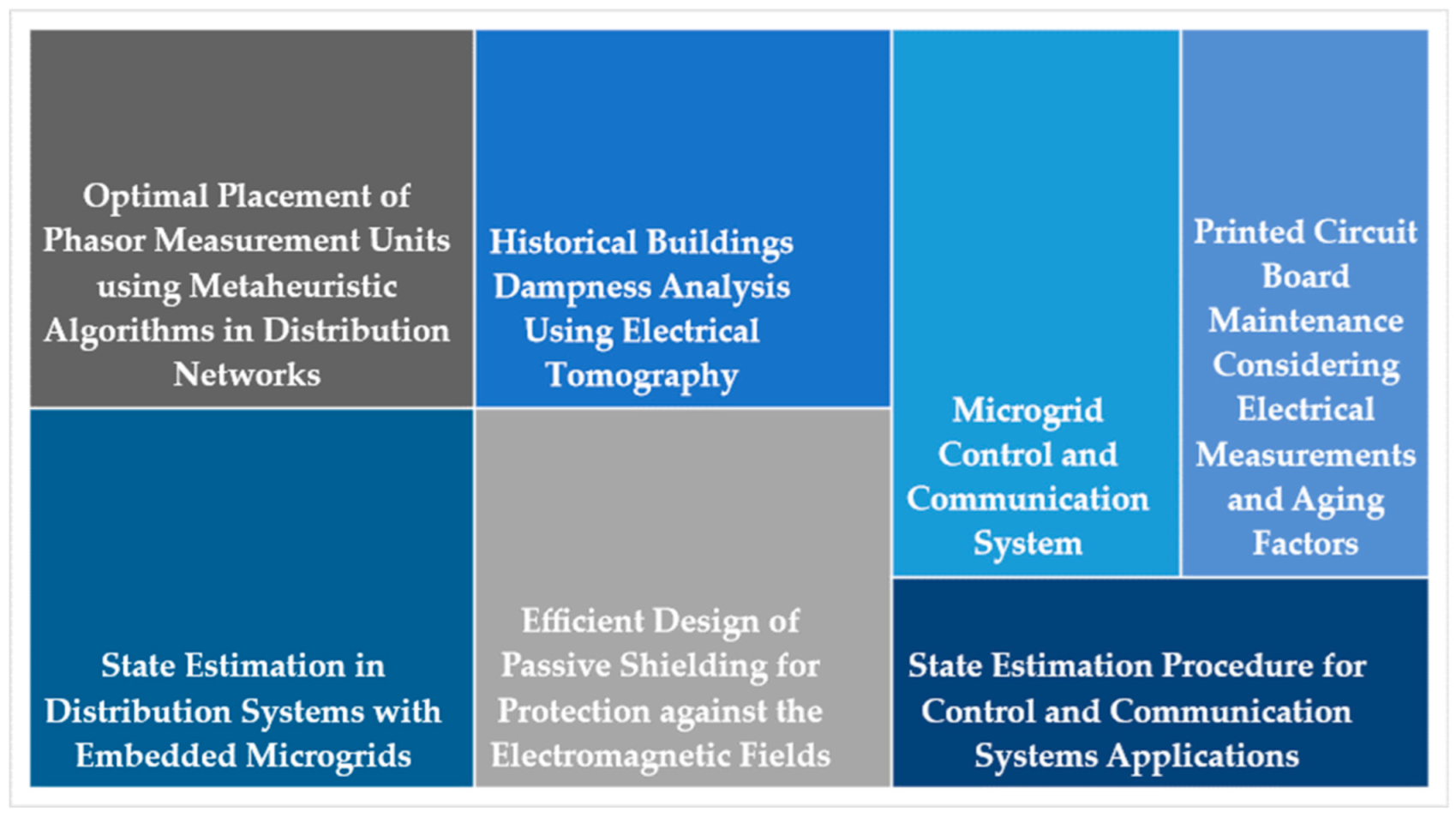1. Introduction
Many combinations of numbers had mystical implications in ancient times, prompting many mathematicians and historians to believe that the ancients often embraced intricacy for its own sake. The ancient Greeks were philosophers and intellectuals but not experimenters, measurers, or tinkerers with electricity. They observed thunderstorms and lightning, but their scientific and technological expertise was insufficient to explain these events, and they did not examine them thoroughly or put them to practical use. Thales of Miletus was a nobleman who lived in ancient Greece. He was one of the “Seven Wise Men” of his time and made significant contributions. Among them, Thales is credited with finding that amber rubbed with wool or hair attracts light substances such as dried leaves or straw. Amber was used for adornment in antiquity, typically with gold and silver alloys, and was known as “electron,” thus the term “electricity” [
1].
From ancient times until today, many inventors, researchers, and scientists, such as William Gilbert, Otto von Guericke, Francis Hauksbee, Stephen Gray, Granville Wheler, Benjamin Franklin, John Canton, Tiberius Cavallo, Horace Benedict de Saussure, Abraham Bennet, Alessandro Volta, Charles Augustin Coulomb, Luigi Galvani, Georg Simon Ohm, Karl Friedrich Gauss, Wilhelm Eduard Weber, Charles Wheatstone, Michael Faraday, Joseph Henry, Lord Kelvin, Heinrich Rudolph Hertz, Guglielmo Marconi, Edward Weston, and many others, have laid the foundations of electricity and established the concept of electrical measurements [
1].
This special issue focuses on “Advanced Electrical Measurements Technologies”.
2. Special Issue Information
The transition from a fossil fuel-based society to a decarbonized society is a major target that has been set to improve the quality of human life. To successfully meet this target, recent advances in computation, communication, and control have been incorporated into the electrical measurement infrastructures, leading to the development of advanced electrical measurements technologies. These technologies have gradually begun to be applied to various sectors such as power energy, transportation, avionics, healthcare, etc., and improve performance in many aspects.
The aim of this Special Issue was to serve as a platform to present contributions toward the various trends and challenges related to advanced electrical measurements technologies. Topics of interest for the call included, but were not limited to:
advanced electrical measurements technologies in power systems and smart grids
advanced electrical measurements technologies in renewable energy systems
advanced electrical measurements technologies in avionics, automotive, and transportation systems
advanced electrical measurements technologies in smart homes and buildings
advanced electrical measurements technologies in healthcare
advanced electrical measurements technologies in education and teaching
advanced electrical measurements technologies in a green economy
advanced electrical measurements technologies in critical infrastructure protection and security
advanced electrical measurements technologies in physics
The response to the call is summarized to the following
Table 1. In total [
2,
3,
4,
5,
6,
7,
8], seven papers were accepted for publication after a peer-review procedure.
To estimate the contribution of institutions and countries/regions in this Special Issue, the adjusted productivity score (APS) is used [
9,
10]. Considering that a paper receives a credit equal to one, the APS of an institute is defined as the sum of credits of all its publications:
where
is the number of papers of an institute and
is the number of institutes of the
paper.
Table 2 presents the most productive institutions sorted by APS.
The geographical distribution of the published papers based on the country of institutes is presented in
Figure 1. Greek institutes contributed three papers to this Special Issue, and all the other institutes equally contributed one paper.
3. A Short Review of Published Papers in This Issue
The already published papers in this Special Issue [
2,
3,
4,
5,
6,
7,
8] cover a large number of topics.
Reference [
2] focuses on the moisture detection inside the walls of a historic building using electrical tomography and presents a comparison of the efficiency of spatial tomographic reconstructions for four algorithms using mathematical modeling and machine learning.
The use of highly permeable magnetic sheets for shielding purposes, along with the development of an appropriate procedure based on finite element analysis (FEA) for the efficient design of passive shielding, is examined in [
3]. The thin magnetic shielding sheets should be placed together with aluminum sheets to avoid stretching the magnetic sheets, which would reduce their magnetic permeability, and take advantage of the aluminum sheets’ additional eddy current-based shielding in high frequencies.
A micro-grid control and communication (MCCD) device for real-time centralized micro-grid control at the field level is proposed in [
4]. The suggested system is a turnkey solution that includes all of the necessary hardware and software. The field data are collected by the MCCD and delivered to the controller multi-thread server (CMTS), where it is analyzed, and further orders are executed. The CMTS’ functionalities are compliant with IEEE 2030.7 and 2030.8 standards.
An estimation approach, which provides an improved compensation when the estimating process is vulnerable to data loss, is described in [
5]. The quantity of information in the proposed model has been increased by taking into account measurement, input, and system disturbance for missing data sample compensation.
A framework for the optimal placement of phasor measurement units (PMUs) using metaheuristic algorithms, namely genetic algorithms (GA) and particle swarm optimizations (PSO), in a distribution network is suggested in [
6]. The state variables for state estimation were based on pseudo-measurement models derived using supervised learning approaches. For supervised learning-based pseudo-measurement modeling, both the GA and PSO approaches allow for optimal PMU placement than the random search (RS).
Based on the block sparse weighted least square (WLS) formulation with equality requirements, reference [
7] provides an enhanced state estimator for smart distribution systems. The proposed methodology can be implemented efficiently in both grid-connected and islanded modes because there is enough measurement redundancy. Furthermore, breaker status errors at major substations and feeders may be effectively identified.
Reference [
8] provides a printed circuit board (PCB) maintenance framework that is completely consistent with the “Right to Repair” concept, taking into account the impact of aging failures based on measurements, as well as component repair and replacement prices. The problem of managing the repair and replacement costs associated with individual failures while guaranteeing that the entire cost of repair does not exceed a certain threshold is extensively analyzed.
The contributions of the published papers in this special issue are described in detail below.
The main contribution of work [
2] is the comparison of different algorithmic techniques to verify the efficacy of detecting moisture in the walls of ancient buildings using electrical impedance tomography. The study’s findings improve the existing state of knowledge in two ways. Firstly, they give accurate data on the efficacy of electrical tomography in detecting moisture in old building walls. Secondly, the work gives the information to assess and compare various statistical and machine learning approaches in the area of tomographic imaging by using stringent quantitative criteria for each of the methods.
Reference [
3] proves that the magnetic field’s dependence on the distance from the shielding electric steel is not monotone because magnetic lines from both sides of the magnetic material field are trapped. As a result, the field distribution at the outer portion of the electric steel sheet reduces until magnetic lines are pushed to be trapped by the electric steel sheet, whilst beyond this point, the contribution of the magnetic field from the whole conductor increases the field distribution.
A micro-grid communication and control device has been developed and deployed in work [
4]. This device calculates the appropriate electrical amounts and sends them to the micro-grid assets through digital and analog instructions. The micro-grid central control system achieves reliable operation for prioritized (essential) loads rather than economical operation during island mode steady-state. Moreover, the criticality and controllability of the loads are categorized, and a load management plan is devised based on this categorization, while an appropriate communication structure between the controller multi-thread server and the micro-grid control and communication device is built. It has to be noted that the proposed technique executes effective transition modes, including unplanned islanding and planned islanding, while, for micro-grid operators, the proposed system includes a graphical user interface for data display and manual control.
The autoregressive–moving–average with exogenous inputs model, described in [
5], uses an auxiliary vector that incorporates the system’s input, measurement results, and sensor noise to correct for lost signal and missing data. In addition to the measurements employed by the existing autoregressive model, the suggested model for data loss correction incorporates system input and sensor noise. To cope with the issue of data loss in state estimation, linear prediction theory was combined with Kalman filtering, enhancing data loss compensation by swapping out the autoregressive model with the autoregressive–moving–average with an exogenous inputs model, which uses additional information related to the missing signal.
Work [
6] provides an approach for optimum PMU placement for supervised learning-based pseudo-measurement modeling approaches, which has been ignored in earlier research. Even in very complicated systems, good metaheuristic search procedures may find excellent placement results in a short amount of time. The suggested framework, which is not confined to particular metaheuristic approaches, may be used to apply a variety of metaheuristic techniques, while the weighted least squares state estimation was conducted with the pseudo-measurement value’s uncertainty in mind and compared to the load profile-based technique.
An equality constraint weighted least square state estimation framework is presented in [
7]. For the sparse symmetric indefinite system of state estimation equations, a high-performance solution is applied. The state estimation technique may run in either a grid-connected or islanded mode, while single or multiple breaker status errors at major substations and feeders are successfully identified.
Reference [
8] provides a systematic and efficient approach that adheres to the “Right to Repair” in terms of longer-lasting products. It is a systematic strategy for printed circuit boards’ maintenance relating to component aging factors and the client’s budget to address the maintenance issue. The problem is handled by utilizing a simple, versatile, and easy-to-implement integer linear programming approach that can be used in any type of home appliance and can handle any number and type of components.
Figure 2 summarizes the contribution of each paper published in the Special Issue.
4. Conclusions
Electricity is the most astounding and life-changing human invention. Although it is difficult to imagine life without electricity now, there was a period when people did not have access to light or technological gadgets. Great brains collaborated to produce this vital resource for humanity. From residential to industrial operations, the development and generation of electricity impacted people’s lives dramatically. Under these conditions, advanced electrical measurements technologies are of major importance to guarantee that people’s health and happiness are not jeopardized. All of the papers published in this Special Issue are in this direction. From these contributions, it can be concluded that the power energy sector is the more flexible and dominant sector that incorporates these technologies.
Future measurement systems will continue to follow a pattern that includes advancements from different sectors in the industry. The design of portable measuring equipment, a mobile app interface, and the development of applications intended for friendly user interfaces are some of the future trends that can be incorporated into smart grids, transportation systems, healthcare, education and teaching, and a green economy.







